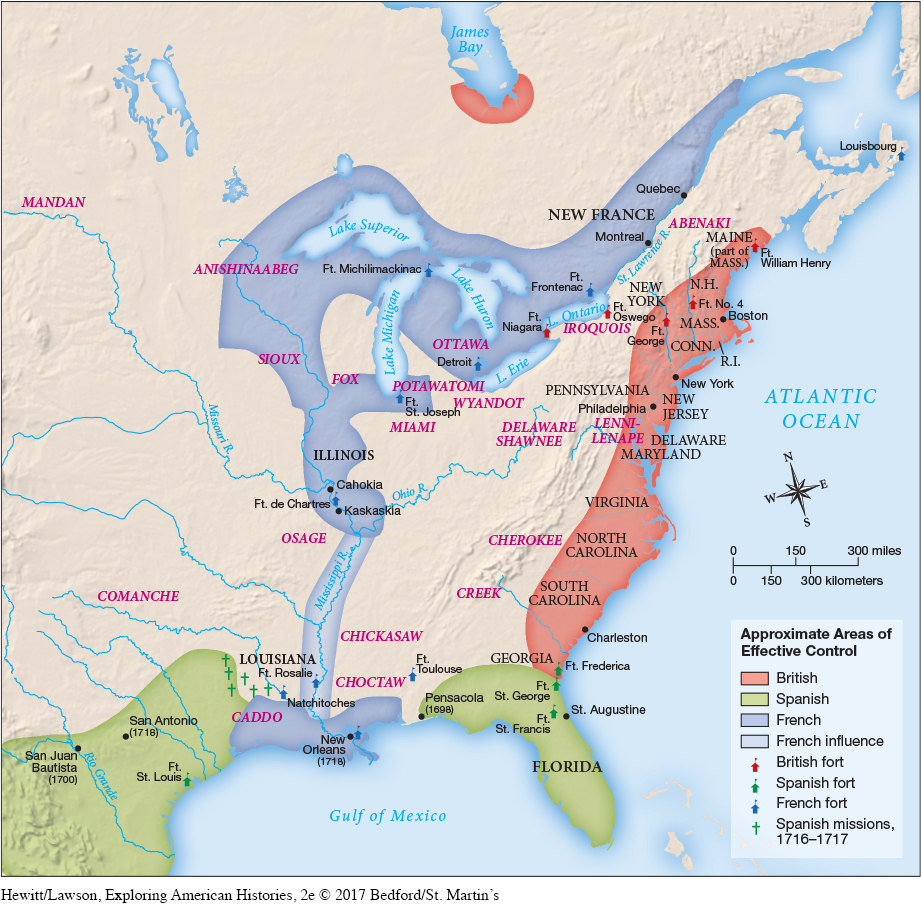Colonial Conflicts and Indian Alliances
France was at the center of much of the European warfare of the period. Louis XIV hoped to expand France’s borders and gain supremacy in Europe. To this end, he built a powerful professional army under state authority. Having gained victories in the Spanish Netherlands, Flanders, Strasbourg, and Lorraine, the French army seemed invincible.
Between 1689 and 1697, France and England fought their first sustained war in North America, King William’s War. The war began over conflicting French and English interests on the European continent, but it soon spread to the American frontier when English and Iroquois forces attacked French and Huron settlements around Montreal and northern New York.
Although neither side had gained significant territory when peace was declared in 1697, the war had important consequences. Many colonists serving in the English army died of battle wounds, smallpox, and inadequate rations. Those who survived resented their treatment and the unnecessary deaths of so many comrades. The Iroquois fared even worse. Their fur trade was devastated, and hundreds of Mohawks and Oneidas were forced to flee from France’s Indian allies along the eastern Great Lakes. “French Indians” and Iroquois continued to attack each other after the peace settlement, but in 1701 the Iroquois agreed to end the raids and remain neutral in all future European conflicts. Wary of further European entanglements, Iroquois leaders focused on rebuilding their tattered confederacy.
A second protracted conflict, known as the War of the Spanish Succession (1702–1713) or Queen Anne’s War, had even more devastating effects on North America. The conflict erupted in Europe when Charles II of Spain (r. 1665–1700) died without an heir, launching a contest for the Spanish kingdom and its colonies. France and Spain squared off against England, the Netherlands, Austria, and Prussia. In North America, however, it was England alone that faced France and Spain, with each nation hoping to gain additional territory. Both sides recruited Indian allies.
After more than a decade of savage fighting, Queen Anne’s War ended in 1713 with the Treaty of Utrecht, which sought to secure a prolonged peace by balancing the interests of the great powers in Europe and their colonial possessions. Yet England benefited the most in North America. At the same time, it consolidated power at home by incorporating Scotland into Great Britain through the 1707 Act of Union. Just six years later, France surrendered Newfoundland, Nova Scotia, and the Hudson Bay Territory to England, while Spain granted England control of St. Kitts in the West Indies, Gibraltar, and Minorca as well as the right to sell African slaves in its American colonies. Yet neither the treaty nor Britain’s consolidation forestalled further conflict. Indeed, Spain, France, and Britain all strengthened fortifications along their North American borders (Map 3.1).

Exploring American HistoriesPrinted Page 76
Exploring American Histories Value EditionPrinted Page 57
Chapter Timeline